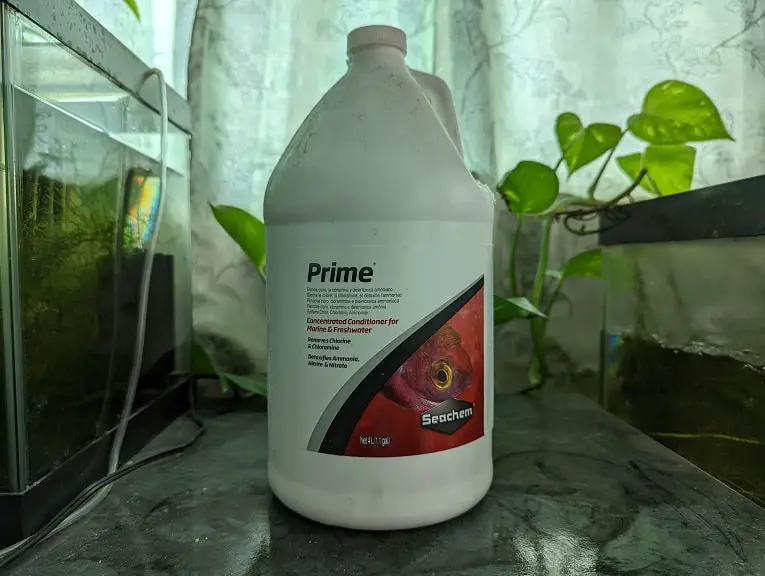Before putting fish in your new tank, you need to properly cycle the aquarium in order to build up your biological filtration. Otherwise, the ammonia and nitrites could end up harming your aquatic pets.
The cycling process can take many weeks depending on your tank’s conditions. If you believed that your cycle has crashed or stalled, then you can check out this troubleshooting guide from Aquarium Blueprints to see what steps you can take.
Quick Summary
If you think that your fish tank cycle has crashed then you can try doing a water change, adding live bacteria and increasing the water temperature.
If you are doing a water change with tap water, make sure you are adding a water conditioner to remove the chlorine and chloramine. Otherwise, these two chemical compounds will end up harming your beneficial bacteria, causing the cycling process to crash.
For live bacteria, you can use a product such as Aquavitro Seed. If you want to raise your tank’s temperature, then you should aim for a range of 80°F to 87°F (or 27°C to 30°C) when cycling.
How to fix a crashed fish tank cycle
1. The first step we recommend taking is to make sure you are providing enough ammonia for the beneficial bacteria living inside your tank to grow and repopulate.
The simplest way to add ammonia is by adding a pinch of fish food in your tank. The food will decompose and will eventually turn into ammonia.
2. On the other hand, having too much ammonia and/or nitrites may also cause your cycle to stall or crashed.
In this case, you can try doing a partial water change in order to dilute the ammonia and nitrite concentration in your aquarium.
3. If you are adding tap water back into your fish tank while it is still cycling, then the chlorine and chloramine in the tap water will end up killing the beneficial bacteria in your fish tank. As a result, the cycling process will get disrupted.
To prevent this from happening, we recommend using a water conditioner, such as Seachem Prime, to remove the chlorine and chloramine.
To find out more about Seachem Prime, you can check out our review for the product with this link.

4. If you believe that you already have enough ammonia in your tank water, then you can try adding live beneficial bacteria.
In order to do so, we recommend using Seachem’s Aquavitro Seed as it contains beneficial bacteria colonies that will consume ammonia, nitrites and nitrates.
These bacteria species will be activated as soon as they are added to your tank water, which should help restore your tank cycle as soon as possible.
5. If you are doing a fish-less cycle or you are doing a fish-in cycle with fish that can tolerate warmer waters, then you can try increasing the temperature of your aquarium to 80°F to 87°F degrees (or 27°C to 30°C degrees).
By increasing the temperature, you will speed up the life cycle of the beneficial bacteria, causing them to mature faster in addition to being able to reproduce at a quicker rate.
